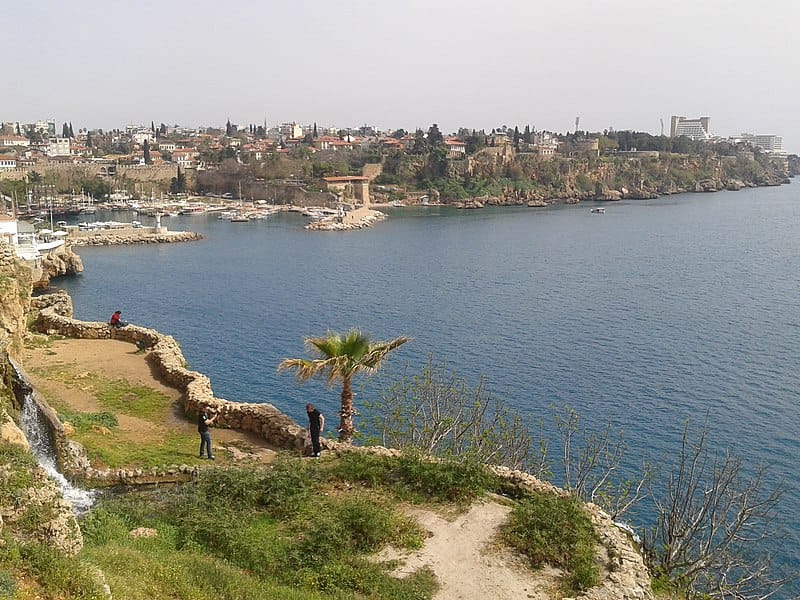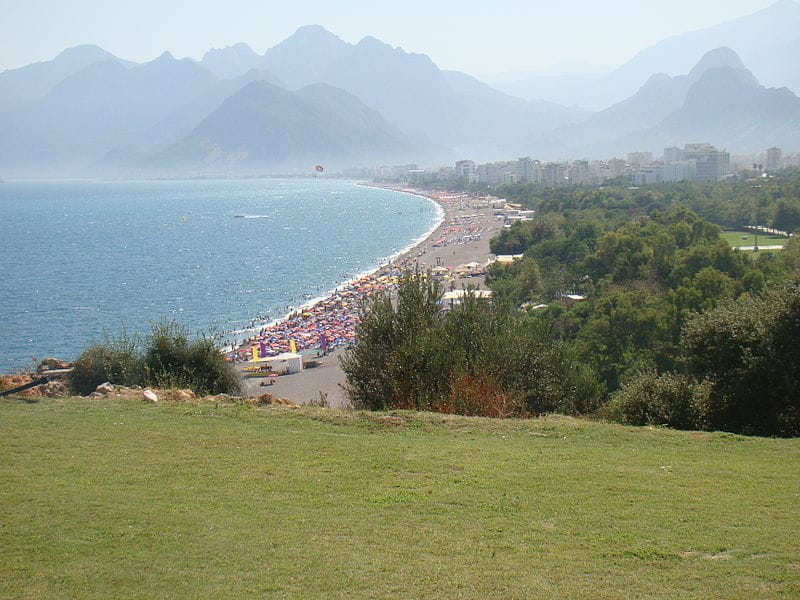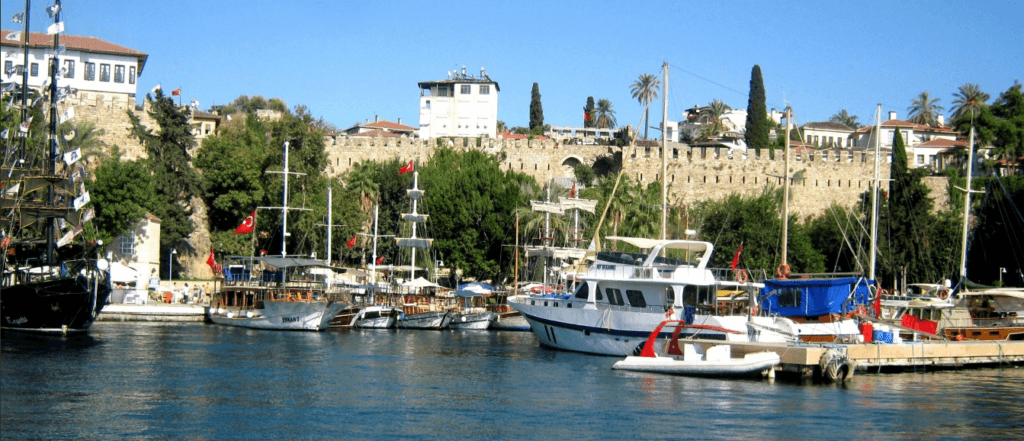
Antalya Weather (5 Days Gov. Forecast)
You may find below the weather in Antalya for the current day and for the following 5 days from Turkish State Meteorological Service Official Web Sites.
Time in Antalya
What time is it in Antalya? Calculating the time difference between your location and Antalya’s time is easy.
Antalya time is; (GMT+02:00) Athens, Bucharest, Istanbul; Europe/Istanbul
Here you may compare your local time with the local time in Antalya.
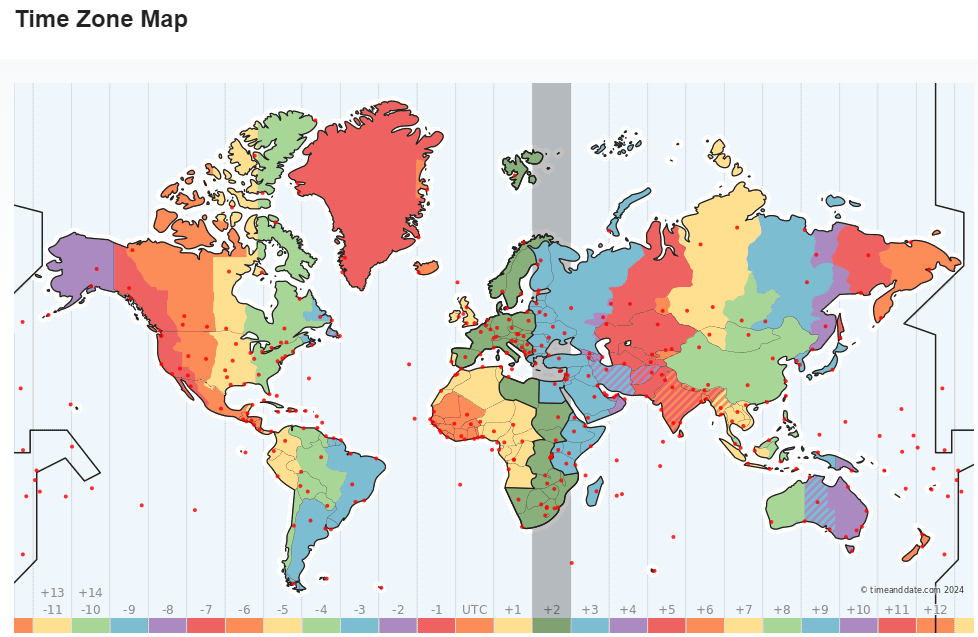
ANTALYA GENERAL INFORMATION
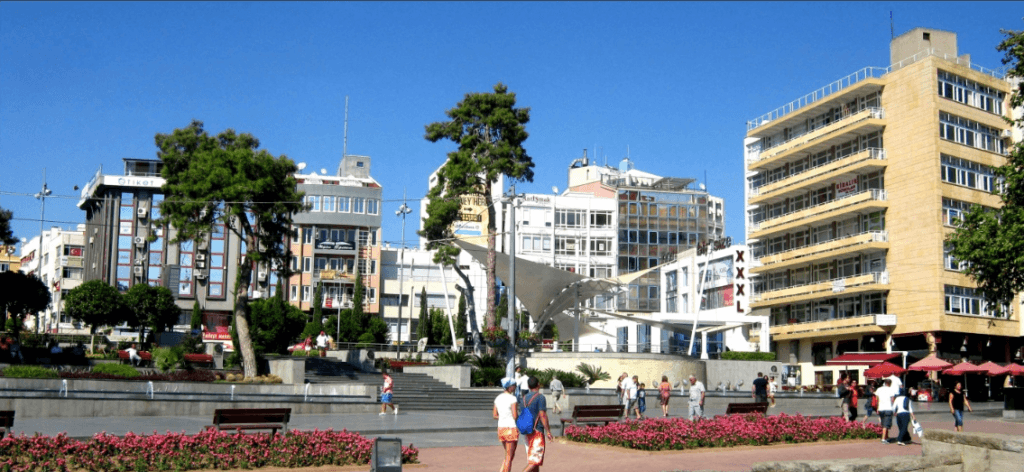
Antalya has been named the “Turkish Riviera” thanks to its archaeological and natural beauties. Antalya, where sea, sun, history and nature are magically integrated in harmony, has the most beautiful and clean coasts of the Mediterranean. Along the 630 km. long Antalya coast, there are ancient cities, ancient harbors, monumental tombs, lace-like bays, sandy beaches, lush forests and rivers.
Antalya is Turkey’s most important tourism center with its palm-lined boulevards, international award-winning marina, Kaleiçi, which forms a charming corner with its traditional architecture, and modern venues. Antalya hosts many cultural and artistic events such as Aspendos Opera and Ballet Festival, International Beach Volleyball, Triathlon, Golf Competitions, Archery, Tennis, Ski competitions, etc., and many cultural and artistic events such as plastic arts, music, theater, and exhibitions with the Antalya Cultural Center opened in 1995.
Antalya Photos
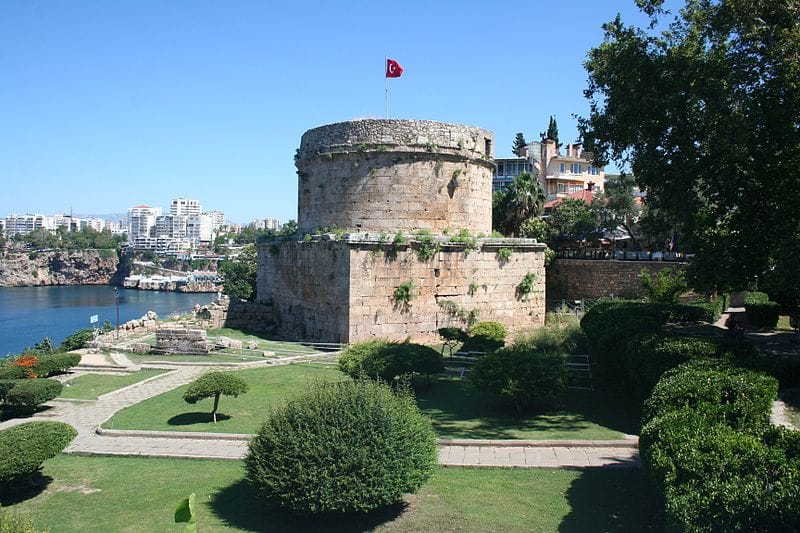
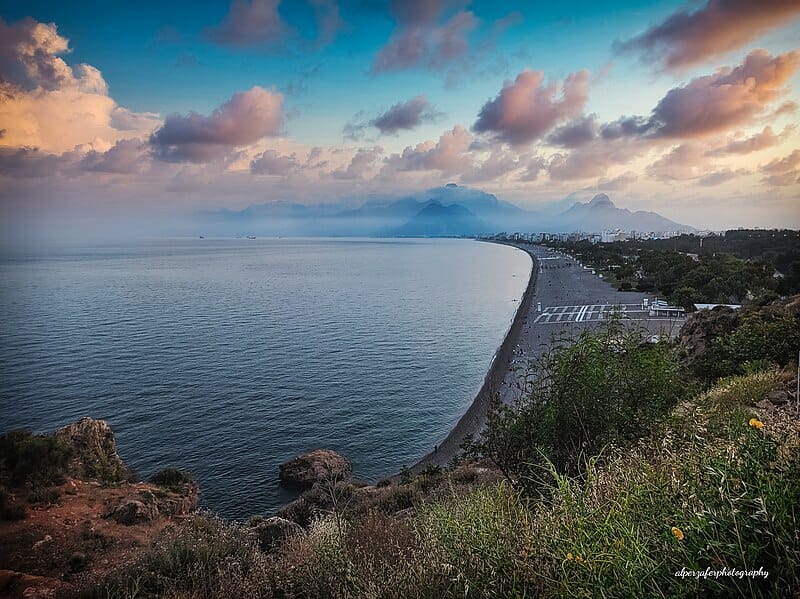
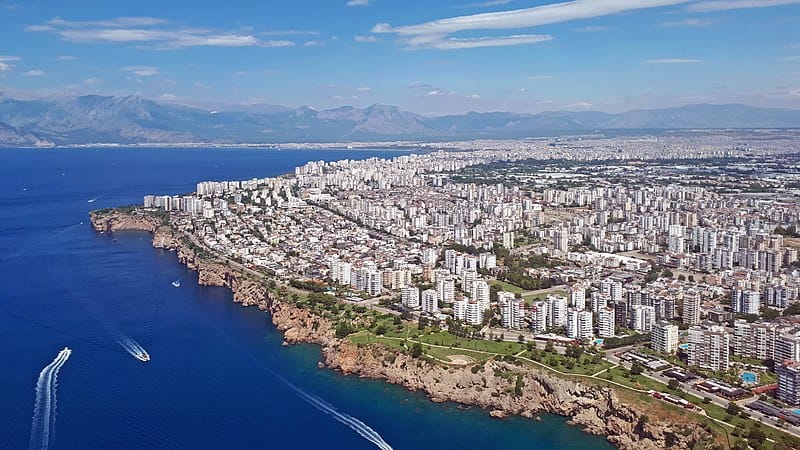
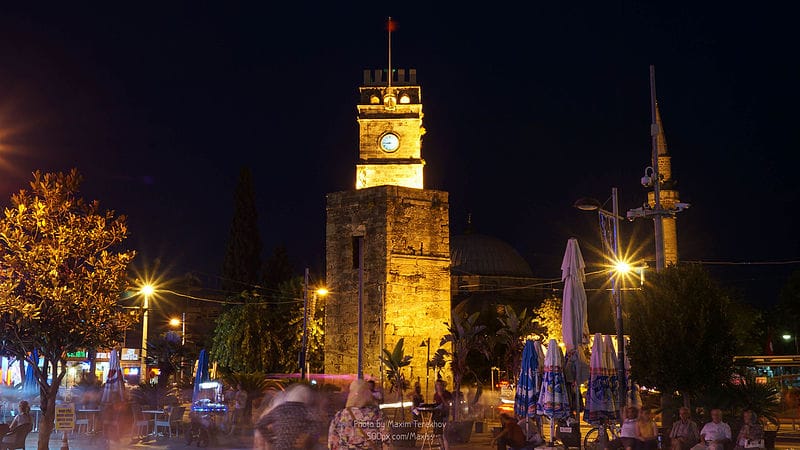

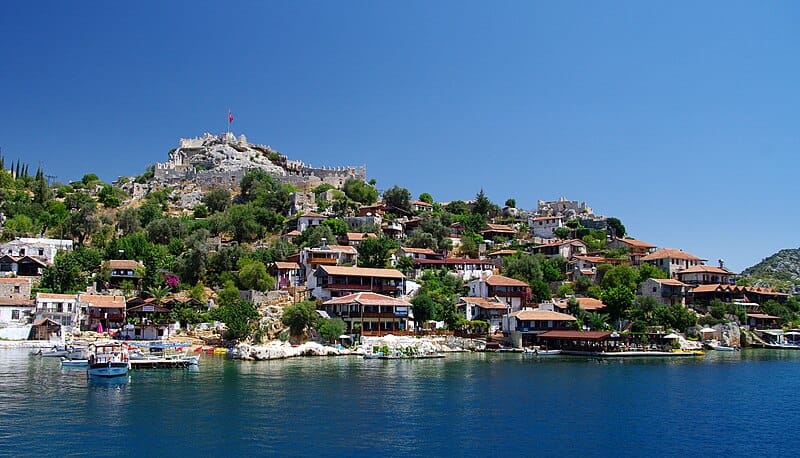
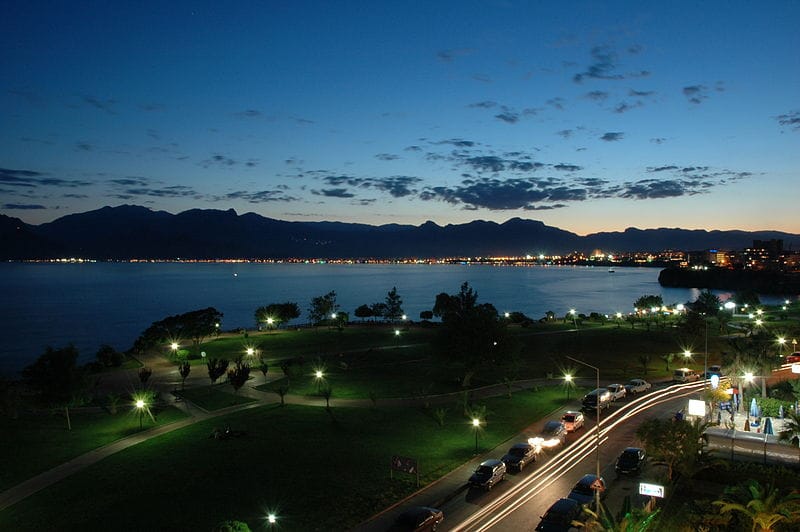
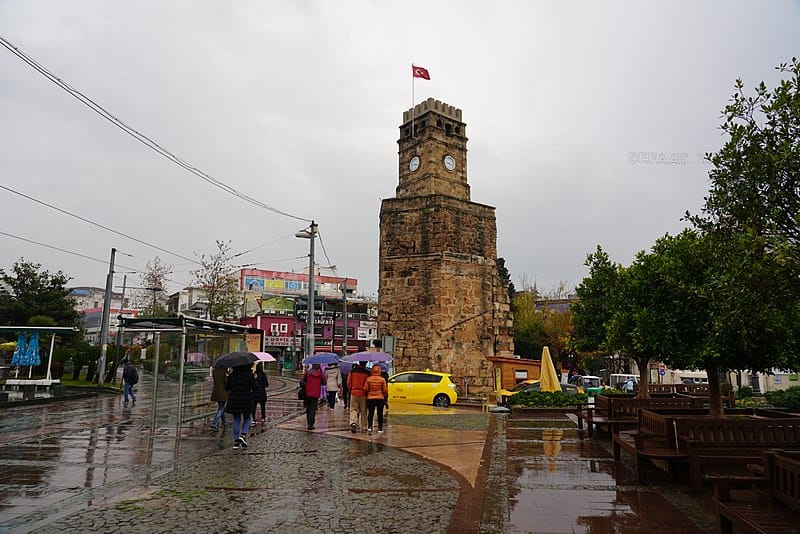


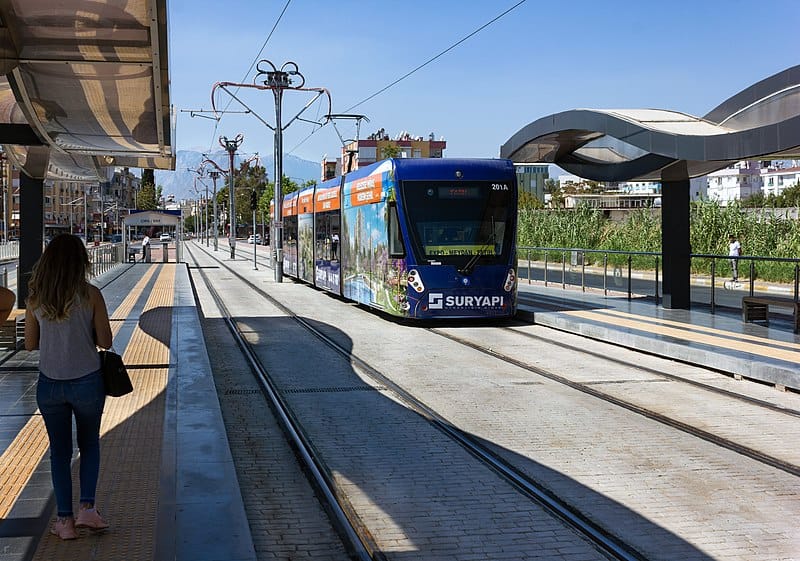
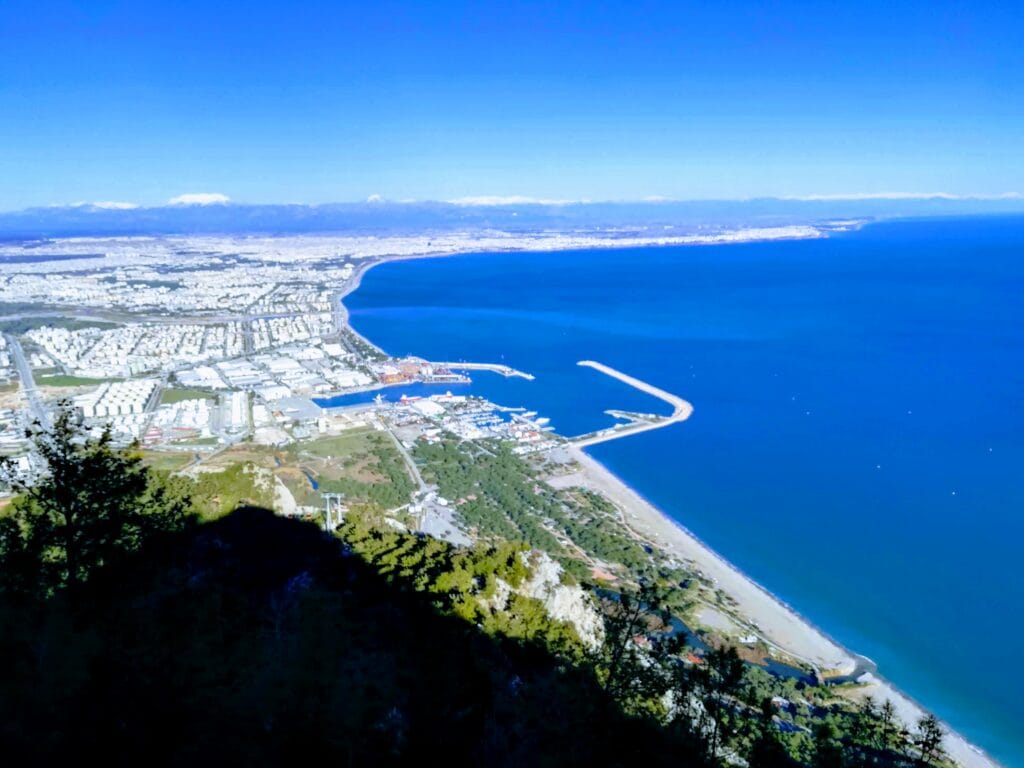
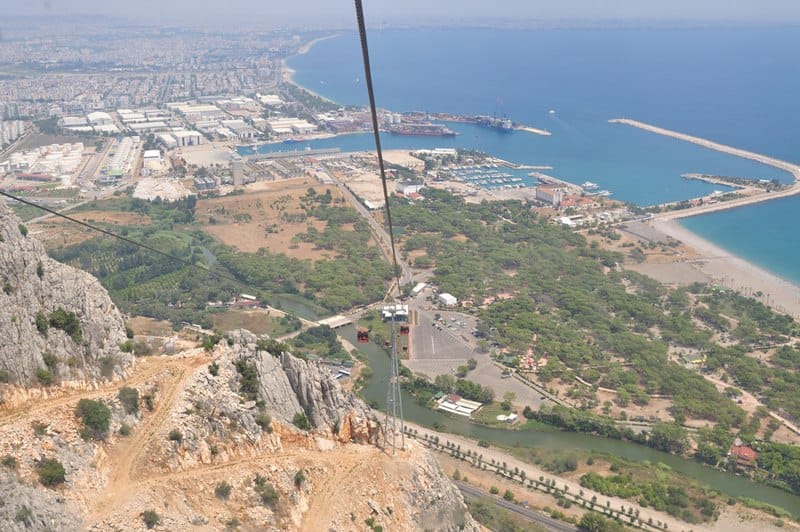
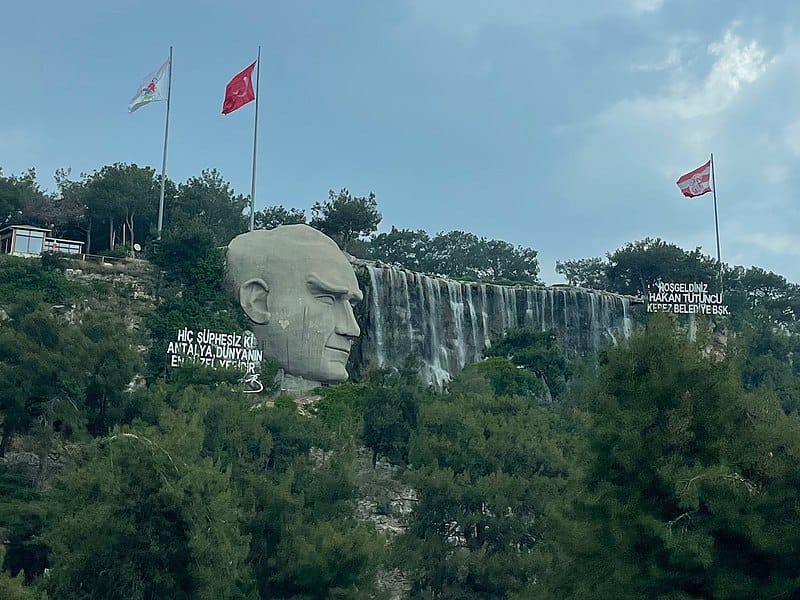
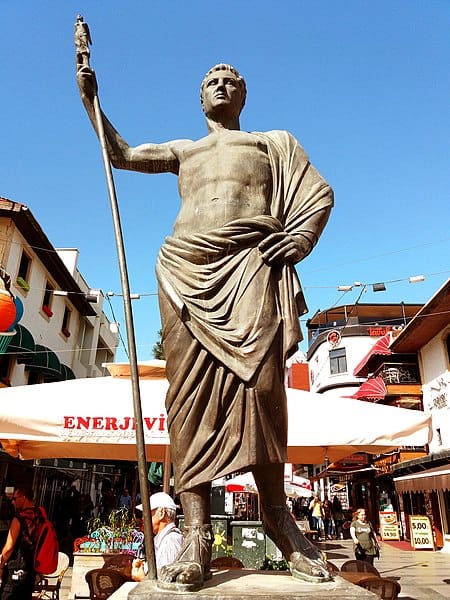
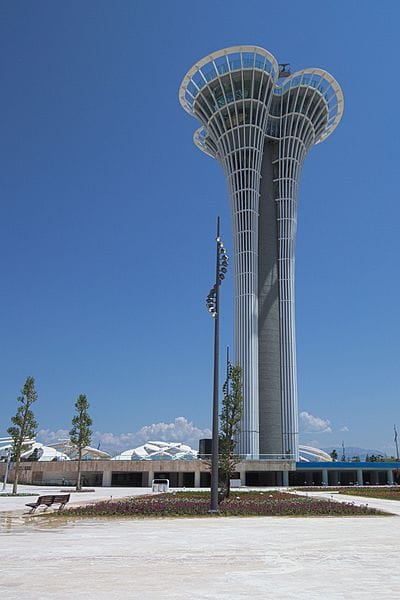
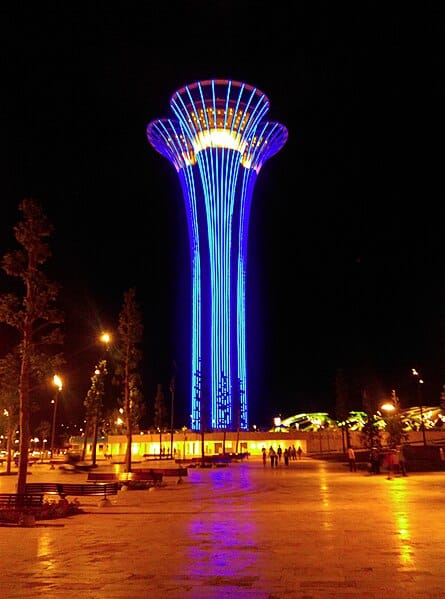
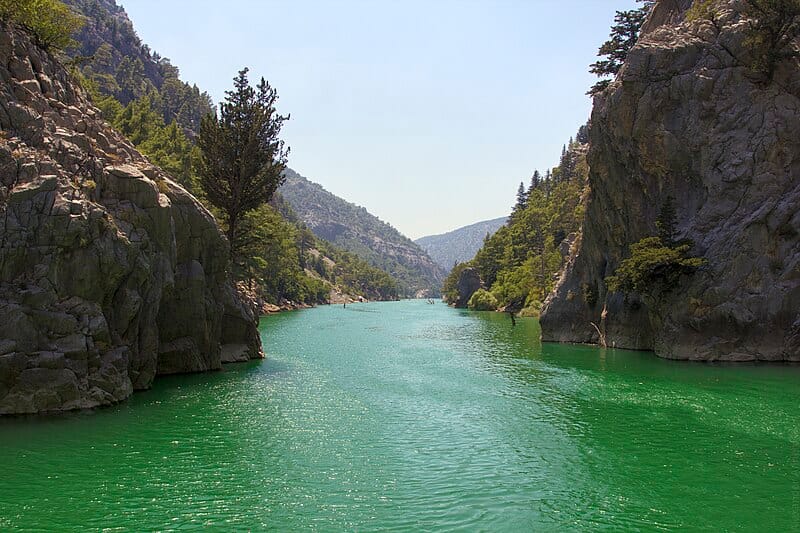
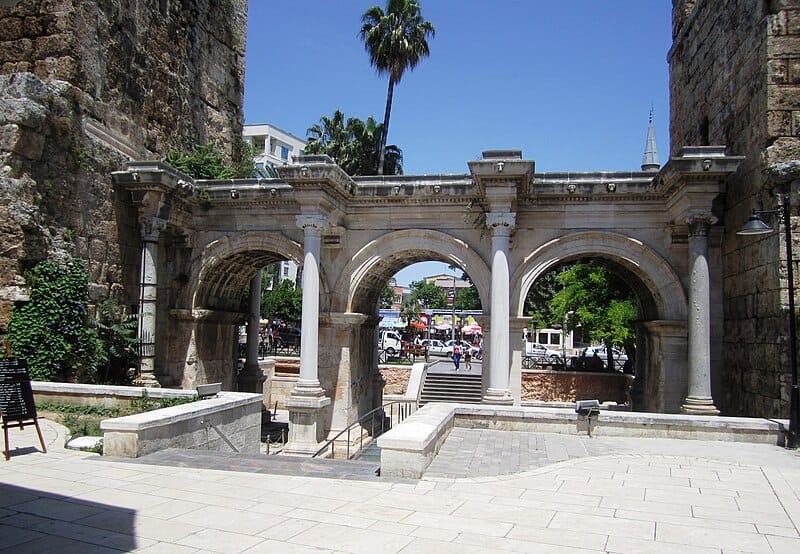
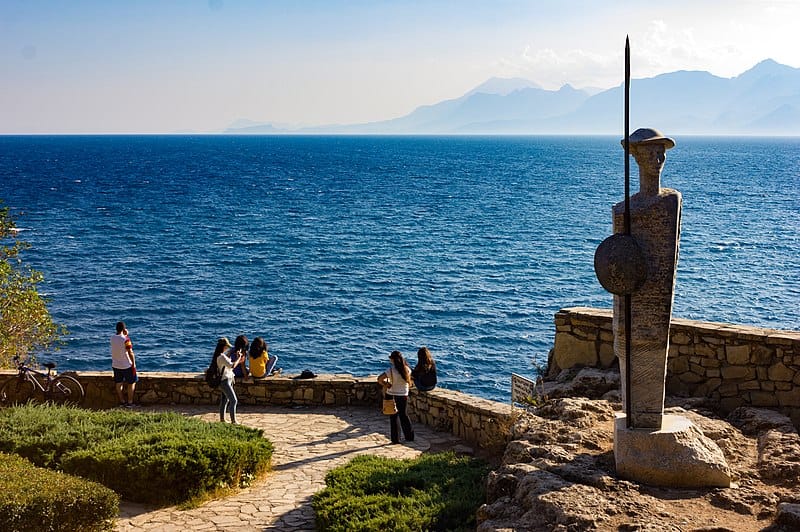
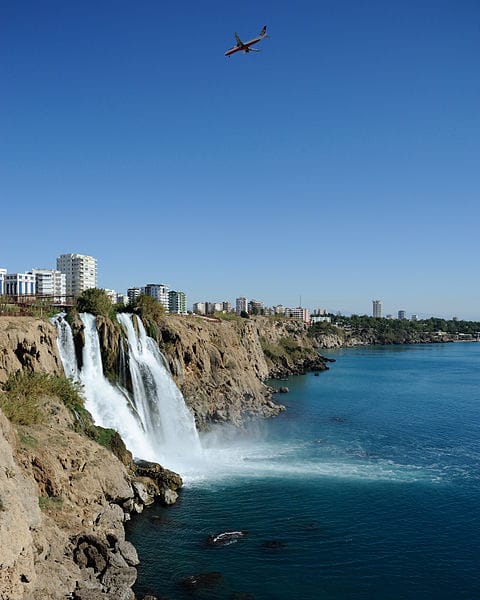

Table of Contents
WHERE IS ANTALYA LOCATION MAP
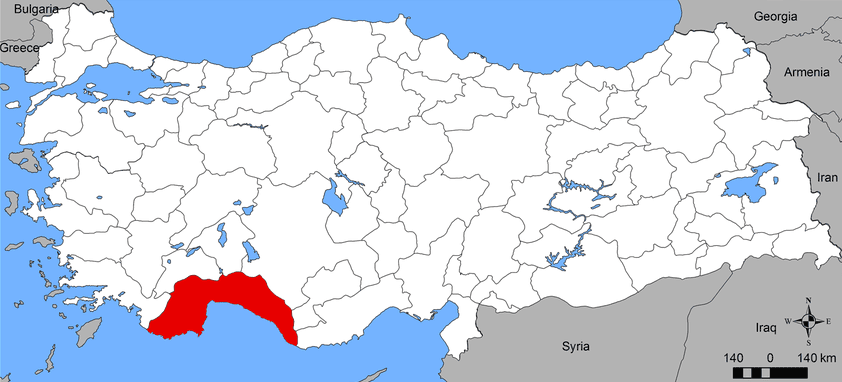
The Taurus mountain range forms the land border of Antalya, one of the most important cities of the Mediterranean Region. The province is surrounded by the provinces of Muğla, Burdur, Isparta, Konya and İçel from west to east and the Mediterranean Sea in the south.
The province is surrounded by high mountains on three sides. The highest mountains are Beydağı (3085m.) and Akdağ (3075m.). All of these mountains are called the Southern Taurus Mountains. There are plains in the north of the coastal band extending from Eşen Stream in the west to Kaledron (Kaldıran) Stream in the east. The main rivers within the provincial borders are Alara Stream, Dimçay, Manavgat River, Köprüçay, Eşençay and Devrense Stream. The maquis species that make up the vegetation of the region are seen up to 300 m. along the foothills and slopes of the Taurus Mountains. Among these species are spruce, tar juniper, myrtle and big myrtle.
Two climates prevail in Antalya province. Typical Mediterranean climate in the coastal region: summers are hot and dry, winters are mild and rainy. In the upper region, the land climate, which is a transition between the Mediterranean climate and the Central Anatolian climate, prevails.
HISTORY OF ANTALYA
Antalya takes its name from its founder, King Attalos II of Pergamon. The city, which was named Attalia in reference to Attalos, was first called Adalya and then Antalya by the Turks.
Archaeological excavations have proved that people lived in Antalya and its region 40 thousand years ago. The remains found in Karain Cave in Yağcılar, 27 km. northwest of Antalya, belong to the Paleolithic, Mesolithic, Neolithic and Bronze Ages.
Since 2000 BC, the region has recognized the sovereignty of city states such as Hittite, Pamphylia, Lycia, Cilicia, Persia, Alexander, Antigonos, Ptolemais, Selevko, Pergamon Kingdom. After the 7th century A.D., the region changed hands frequently between the Seljuks and the Byzantines and was captured by the Seljuks in 1207. This was followed by the rule of Tekelioğulları, Ottomans, Karamanoğulları and then again by the Ottoman rule.
Ancient Cities in Antalya
Antiocheia Adcragum:
It lies within the borders of Güney Village, 18 km. to the east of Gazipaşa district. The name of the city comes from the Commagene King Antiochus IV. There are ruins of the castle, colonnaded street, agora, bath, triumphal arch, church and necropolis area of the city. In the necropolis of the city, the monumental tombs with barrel vaults and forecourts unique to the region are very well preserved.
Adanda-Lamos:
The ancient city is 15 km. northeast of Gazipasa district. It was founded on the summit of a high and steep mountain, 2 km. north of today’s Adanda village. The city is surrounded by city walls. There is a large tower to the south of the entrance gate. Other remains of the city include a fountain carved into the natural rock and two temples. In the necropolis of this city, monolithic sarcophagi made by carving block stones are among the important remains. The ruins reflect the culture and art of the mountainous region of Cilicia in the best way.
Nephelis
Access to the ancient city is provided by a 5 km. stabilized road that passes through Muzkent Village after the 12th km. of Gazipaşa-Anamur and turns south. The city consists of an acropolis and ruins extending east-west. The surviving structures of the city are the Medieval Castle, the Temple Odeon Irrigation system and necropolis areas.
Selinus
The ancient city of Selinus, located on the southwestern slopes of the Hacımusa Stream where Gazipaşa Beach is located, is one of the most important cities of the mountainous Cilicia region.
The acropolis of the city was built on a hill. The fortification walls and towers of the medieval castle on the hill are very well preserved. The acropolis, the church and the cistern are among the important structures that have survived to the present day. The other structures of the city are the baths, agora, Islamic Building (Pavilion), aqueducts and necropolis. The majority of the ostotecs in the Alanya Museum were brought from the Selinus Necropolis and the ostotec workshop continues to exist here.
HOW TO GO TO ANTALYA
Highway:Antalya has a highway connection with every region of Turkey. The most convenient way to reach the region by road from major centers such as Istanbul and Ankara is the Afyon – Burdur – Antalya road.
Bus Station Tel: (+90-242) 331 12 50
Railway: There is no train station in Antalya. The nearest train station is in Burdur.
Airline Antalya Airport provides service.
DHMI Antalya Airport Domestic Terminal Tel : +90- (242) 330 30 30 30
Bayındır Antalya International Terminal Tel: +90- (242) 330 36 00
Antalya Port is Turkey’s most important maritime gateway.
Port Authority Tel :(+90-242) 259 12 12
PLACES TO VISIT IN ANTALYA
Historical and Cultural Environment:
Walls
A few bastions inside the city, Hadrian’s Gate and the towers next to it, the large tower facing the harbor and some parts of the harbor walls have survived to the present day. One of the two walls surrounds the marina and the other surrounds the city like a horseshoe. One of the surviving towers in the Castle Gate Square is used as a clock tower. The city walls have four gates that provide access to the city.
Kaleiçi
Today, Antalya’s “Historic Core City” and the neighborhood known as “Kaleiçi” is surrounded by two walls, most of which have been destroyed and destroyed. The inner wall surrounds the marina in a semicircle. As a result of restoration works, Kaleiçi has become a tourism center with its hostels, bars and bazaar. The harbor is organized as a marina. The Ministry of Tourism was awarded the Golden Apple (Tourism Oscar) by FİJET on April 28, 1984 for the restoration works in Kaleiçi.
Hadrian’s Gate
The only gate that has remained intact until our time with the two towers on its sides is the Üçkapılar or Hadrian’s Gate and it is the most beautiful gate of Pamphylia. Built in 130 AD in honor of the emperor Hadrian’s arrival in Antalya, the gate is made entirely of white marble, except for the columns. Its carvings and reliefs are extraordinary.
Old Antalya Houses
In Antalya, where summers are very hot and winters are mild, more importance was given to preventing the sun and providing coolness than cold in the construction of houses. Shaded stones and courtyards are features that facilitate air flow. It was built on three floors with the entrance serving as a warehouse and hall.
Museums and Ruins in Antalya
Museums
Antalya Museum
Address Konyaalti Cad. Antalya
Tel: (242) 238 56 88-89
Fax: (242) 238 56 87
Side Museum
Address: Selimiyeköyü Manavgat – Antalya
Tel: (242) 753 10 06
Fax: (242) 753 27 49
Alanya Museum
Address Hilmi Bağcı Cad. Alanya – Antalya
Tel: (242) 513 12 28
Perge Museum
Church of Santa Claus
Dim Cave
Perge
It is located 18 km east of Antalya, within the borders of Aksu Sub-district. It is an important city of Pamphylia since it is located on the Cilicia – Pisidia trade route. The foundation of the city coincides with other Pamphylian cities (7th century BC). Perge, whose main goddess was Artemis of Perge, was an important city for Christians. A.D. St. Paul and Barnabas came to Perge. Some rich people like Magna Plancia brought important monuments to Perge.
The first excavations were started by Istanbul University in 1946 and the important ruins of Perge are as follows:
Theater: It consists of three main sections: Cavea, orchestra and stage. It has a capacity of 12,000 spectators. There are 19 seating rows at the bottom and 23 at the top.
Stadion: 34 x 34 m. in dimensions. There are thirteen seating rows on the vaults. There are thirty vaults on the east and east sides and ten vaults on the north. One of the three vaults is the entrance to the Stadion and the other two are used as shops.
Agora: The commercial and political center of the city. There are shops all around the courtyard in the center. The floors of some shops are covered with mosaic. The agora, which has a round structure of 13.40 m. diameter in the middle of the square, measures 76 x 76 m.
Colonnaded Street: It extends between the nympheum at the foot of the Aropolis. A 2 m. wide water channel in the middle divides the street into two.
Other structures in Perge are necropolis, city walls, gymnasium, baths, monumental fountains and gates.
Sillyon
It is located near Yanköy, 13 km northeast of Aksu. The city was founded in the 14th century BC on a high plateau in the direction of Aspendos and Perge. The Seljuks also benefited from the city, which experienced various civilizations. The stadium, gymnasium, towers, Seljuk Masjid and a theater whose stage part has disappeared are the remaining ruins.
Termessos
Termessos is located on a plateau at an altitude of 1050 meters on the west side of Mount Güllük, a Natural Park 34 kilometers from Antalya. Termessos was founded by the Solyms who came from the interior of Anatolia.
The theater with a capacity of 4200 people, one of the important ruins, was built by Emperor Augustus in the early 1st century AD. The Odeon, which is a covered parliament meeting building, has seating for 600 people. The underground cistern, consisting of five interconnected cisterns, was used for storing water and olive oil.
The Agora, open on the west side and surrounded by columned galleries on the other sides; Hereon, the heroic monument sitting on a 6 m. high platform, Corinthian regular temple, Temple of Zeus Solymeus, Small and Large Temples of Artemis, Gymnasium, watchtowers are other important ruins. Apart from these, there are many monuments and over 1200 rock tombs.
Olympos
Olympos, one of the most important port cities of ancient Lycia, has been the subject of mythology throughout history. Olympos, which was a shelter for pirates due to its favorable location, is now known all over the world with its historical values, 3200 m magnificent beach, endemic plants, Caretta caretta’s Khimaira, magnificent nature that allows all sportive activities and famous tree houses used as pensions.
Ariassos
Ariassos, dating from antiquity, is one kilometer from a left turn at the 48th kilometer of the Antalya-Burdur highway. Built on the slope of a mountain, the city is worth seeing for its baths and rock tombs.
Phaselis
Phaselis is reached after turning one kilometer to the left at the 57th kilometer of the Antalya-Kemer highway. Founded by the Rhodians in the 7th century BC, the city is known as the most important port city of Eastern Lycia. There is a 20-24 wide street in the ancient city with three piers. There is Hadrian’s gate at the western end of the street and shops and baths on the right and left sides. It is possible to reach the city by land and sea.
Limyra
The city, which is believed to have existed since the 5th century BC, is located at the 11th kilometer of Kumluca-Finike Highway. Damaged in 141 by an earthquake, the city survived, but was evacuated after the Arab occupation in the 7th and 9th centuries. The city consists of three parts. The acropolis, the settlements and the necropolis.
Arycanda
It is 26 kilometers from Turunçova on the Kumluca-Finike highway. It is not known exactly when the city, which controls the Akarçay valley, was founded. According to the finds, the city is thought to have existed in the 5th century BC. The city, which was significantly damaged by an earthquake in 240 AD, continued its vitality until the 11th century. Many buildings of the city, known as Aalanda during the Byzantine period, are well preserved.
Demre (Myra)
Demre (Myra), 25 km from Finike and 48 km from Kaş, is one of the 6 great cities of the Lycian civilization. Demre, which first became a settlement center in the 5th century BC, was previously on the seashore, but its connection with the sea was cut off as a result of the alluvium brought by the Demre stream. The city was abandoned after the Arab invasions in the 9th century AD. Rock tombs, theater and St. Nicholas church are worth seeing. The port of Andriake, built by Hadrian and containing a granary, is connected to Demre.
Church of St. Nicholas
St. Nicholas, commonly known as Santa Claus, was born in Patara near Fethiye in 245 AD and died in 363 AD. The well-educated son of a wealthy family, St. Nicholas devoted his life to helping people, especially children and sailors. The fame of this help has survived to this day in the form of the legend of Santa Claus.
As a priest of Demre, St. Nicholas helped people religiously and socially, and when he died, he was buried in Demre and a church was built next to his grave. In 1080, Italian pirates smuggled some bones to Bari. However, some of the remaining bone fragments are today in the Antalya Museum.
The Santa Claus symposium, the first of which was held on December 5-7, 1983, has been repeated every year since then with the participation of people from different religions and education. In this symposium, following in the footsteps of St. Nicholas, people of different religions and beliefs are called for peace, friendship and brotherhood.
Simena (Castle)
Simena, which takes its beauty from its history, sea and sun, can also be reached by sea from Üçağız. The sunken city and ancient ruins on the opposite island of Kekova under the fascinating blue of the Mediterranean Sea are worth seeing. It is possible to come across the ruins of many civilizations in Simena, whose history dates back to the Lycian civilization. The theater and walls carved into the rocks are just a few of them.
Kekova
It is between Kaş-Demre. It is the sunken ancient city located on the island 500 meters from the shore opposite Üçağız Village in the Mediterranean Sea.
Patara
Patara is located on the Kalkan-Fethiye road, about 10 km. before Kalkan and to the south. The colorful ceramics found in the center of the city show that the history of the city dates back to the 5th century BC. Besides being the birthplace of St. Nicholas, it was an important port city during the time of Alexander the Great. The city walls with three gates, one leading to Patara, were built by Governor Modestus in 110 AD. One of its most important ruins is the ancient Patara Theater.
Xanthos
Founded in the valley of the Xanthos river, the city is the oldest and largest city of the Lycian civilization. Xanthos, which was independent until the Persian invasions in 4292 BC, bravely defended their city against the invaders, but when they realized that they would not succeed, they first killed their women and committed suicide by throwing themselves into the fire. Later, 80 families migrated to the region and rebuilt the city, but about 100 years later the city was destroyed by a fire.
The rebuilt city strengthened its relations with the west and became an important center, but it could not escape its misfortunes. When it resisted Brutus’ taxes, the city was destroyed and the people were dragged into war and Xanthos turned into a city of disasters.
The city was formed around the Lycian center and there are ruins outside it. The ruins west of the theater are still of interest today. The Harpy statue on the rocks is one of the most important works. The original is in the British Museum in England and only a copy of it exists today.
Kas (Antiphellos)
The name of Kaş, one of the Lycian cities, comes from “Phellos” meaning “stony place”. Today, Kaş is a coastal town worth seeing with its well-preserved rock tombs and theater.
Side
Manavgat-Side
Aspendos
The ruins of the ancient city in Serik district, 48 km east of Antalya, are largely intact.
Serik District-Aspendos
MOSQUES AND CHURCHES IN ANTALYA
Yivli Minaret and Complex, Kesik Minaret Mosque, Bali Bey Mosque, Muratpaşa Mosque, İskele Mosque, Karatay Madrasah, Ahi Yusuf Masjid and Mausoleum are important ones.
INNs
Evdir Han
The first stop on the road heading north from Antalya is Evdir Han. It is 1 km. east of today’s Antalya-Korkuteli highway and 18 km. away from Antalya. The most striking part of Evdir Han with its pointed arched portal was built by Keykavus I between 1210-1219.
Kırkgöz Han
The second stop between Antalya and Afyon is Kırkgöz Han. Kırkgöz Han is located in Pınarbaşı in Kırkgöz, 30 km. away from Antalya. It is in a very strong condition.
NATIONAL PARKS AND PROTECTED AREAS IN ANTALYA
Duden Waterfalls
It is about 10 km. away from the city center. 20 m. The main source of the waterfall is at “Kırkgöz Mevkii”. Lower Duden Waterfall is 8 km. away from the center on the Lara road. It flows into the sea from a 40 m. cliff.
Altınbeşik Cave National Park
Beydaglari National Park
Gulluk Mountain National Park
Köprülü Canyon National Park
Kursunlu Waterfall Nature Park
Alacadağ Nature Reserve
Ciglikara Nature Reserve
Dibek Nature Reserve
CAVES IN ANTALYA
There are many caves opened for tourism within the borders of Antalya province.
PLATEAUS IN ANTALYA
In general, Antalians and Yoruks spend the summer season in the plateaus in the Taurus Mountains, which have an altitude of 1000 m. or more and are quite cool in summer. The main plateaus in the region are Bakırlı, Basil, Yeşil Yayla, Saklıkent.
SPORTIVE ACTIVITIES IN ANTALYA
Saklikent Ski Center
In Antalya, where 4 seasons can be experienced at the same time due to its geographical location, it is possible to ski in Saklikent, 50 km from Antalya, while swimming on the beach.
Mountaineering and Climbing in Antalya
Beydağları, one of the extensions of the Taurus Mountains, is within the borders of Antalya province. The mountains between 600-3086 m. offer different opportunities for geologists and geographers. Tekedorğu, Bakırlı Dağ, Tahtalıdağ and Kızlar Sivrisi are important peaks. The highest peak is Kızlar Sivrisi with 3086 m. Climbers reach this peak through Çamkuru Valley covered with cedar forests. Climbing the mountain can be completed in one day.
Rafting in Antalya
Köprüçay, within the borders of Koprulu Canyon National Park, is one of the most interesting rafting centers of the country. Manavgat River, which flows within the borders of Manavgat district, one of the important tourism centers of Antalya, has suitable tracks for rafting.
Underwater Diving in Antalya
It is possible to dive underwater from many points on the coast of Antalya.
Antalya Diving Spots
Hunting in Antalya
There are plenty of partridges, pheasants, wood pigeons, quail, stepchicks along the coast and in the highlands, and wild pigeons, woodcock, woodcock, turach, blackbirds in rocky areas and plains.
Many wild ducks and wild geese living in lakes and ponds descend to the shores in winter. There are deer, foxes, martens, fallow deer, squirrels, wild goats in the forested parts of the coast, and bear and wolf species in the mountains.
Fishing in Antalya
You can find every kind of fish you want to see in Antalya waters. Fish such as whitefish, hunter, bream, sea bream, fangri, iskarmaç, iskorpit, isparit, horse mackerel, swordfish, swallowfish and girida fish specific to the Mediterranean are very delicious. Especially sea bass and mullet are found where the rivers meet the sea. You can also catch pike, halibut, scallops, beetles, lobsters and crayfish.
Antalya is a trout paradise. In addition to trout, which are abundant in the streams of the region, it is possible to see mullet, sea bass, carp and eels in various rivers and ponds.
What to Eat in Antalya
The diet of nomads living in rural areas is based on livestock and wheat-based foods. Although a few fresh vegetables are produced in the coastal strip, wheat and dried vegetables gain weight as one moves inland.
The main local dishes that preserve their place in today’s diet are as follows: Kölle (boiled wheat, beans, chickpeas and fava beans), hair roasting, tomato civesi, hibeş, arapaşı, tandoori kebab, and desserts such as aubergine, bergamot and citrus jam.
Recipes from Antalya
Eared Soup
Ingredients
1 cup chickpeas
6 cups of water
250 gr. cubed meat
2 tablespoons margarine
salt, black pepper
For the seasoning:
2 eggs
2 cloves of garlic
2 tablespoons flour
Juice of 1 lemon
2 tablespoons of yogurt
For the dough
1 egg
2 cups flour
1 tea glass of water
salt
Preparation:
Knead the dough to the consistency of an earlobe. After resting for half an hour, cut the dough into strips slightly bigger than the noodles and place them on a tray to remove the moisture. Boil the chickpeas soaked overnight and the cubed meat together. When it is sufficiently cooked, add the dough you cut, salt and black pepper. Roast the flour on the other side. Add garlic. Whisk the egg, lemon juice and yogurt in a separate bowl. Add the flour mixture into this mixture and pour it slowly over the boiled chickpeas and mix well. Heat the mint in a little oil in a pan and pour it over the soup and serve.
Antalya Piyaz
Ingredients:
2 cups dried beans
1 cup tahini
3-4 tablespoons of vinegar
2 onions
2 green peppers
Juice of 1 lemon
salt, red pepper flakes
Preparation:
Boil the beans soaked in the evening. Finely slice the onion and green pepper. Mix all the ingredients and place on a serving plate. Garnish with parsley leaves and serve.
Stuffed Peppers with Coke
Ingredients:
10 bell peppers
15 tablespoons of cottage cheese
1/2 bunch of parsley
4 tomatoes
2 onions
2 tablespoons of vegetable oil
1 teaspoon cumin
1 teaspoon black pepper
salt
Preparation:
Chop the onions and fry them in oil until they turn pink. Chop the tomatoes into small pieces and add to the onion. Continue roasting until the tomatoes are cooked. When the tomatoes are cooked, remove from the fire and let it cool down. Add chopped parsley, cottage cheese, cumin, salt and black pepper into this mixture. Clean the inside of the bell peppers and fill them with the mixture. Place them on a baking tray, add very little water and bake in the oven for about 30 minutes.
Hibeş
Ingredients
1 cup tahini
1 glass of water
Juice of 1 lemon
cumin, paprika
Preparation:
Mix tahini and lemon juice in a bowl. Add water and continue to mix well. Add cumin and red pepper powder, and place it on a serving plate. Garnish the top with cumin and red pepper powder and serve.
ANTALYA SHOPPING
Antalya has sales stores that can meet all kinds of needs of local and foreign tourists. Antalya is famous for its jams made from almost all kinds of fruits and vegetables. The most important ones are the jams of citrus, bergamot, eggplant and watermelon, which are unique to Antalya. You can also find Turkish souvenirs in the shops of the Ministry of Culture and Tourism and in the shops in Kaleiç. “Döşemealtı Carpets” dyed with the local root dye are also very famous.
DON’T RETURN WITHOUT DOING
- Without visiting the ancient cities scattered in every corner of Antalya,
- Without seeing the Antalya Museum,
- Without going to Saklikent,
- Without seeing Kaleici and Old Antalya Houses,
- Without taking a photo of the snowdrop flower in Akseki District,
- Without buying an underfloor carpet,
- Without tasting the local jams,
- Don’t come back.
DISTRICTS OF ANTALYA
The districts of Antalya province are Akseki, Alanya, Elmalı, Finike, Gazipaşa, Gündoğmuş, İbradı, Kale, Kaş, Kemer, Korkuteli, Kumluca, Manavgat and Serik.
Akseki
Akseki, the oldest district of Antalya province after Alanya, has a rugged and mountainous appearance suitable for the structure of the Taurus Mountains.
In parallel with the developments in the field of tourism in Antalya province and its surroundings in recent years, tourism activities are developing in Akseki district. Akseki, which is frequented by hunters and tourists, is the homeland of the “Snowdrop Flower”. In the winter months, local and foreign tourists visit the district to see the Snowdrop Flower.
Giden Gelmez Mountains, mountain goat protection and hunting area is the place where hunters will hunt continuously for a fee, and trout breeding facilities established in Sinan hoca and Gümüşdamla villages are among the places frequented by hunters and tourists.
Göktepe Plateau, Çimi Plateau, Irmak Valley, 340-meter deep Bucakalan Cave discovered in recent months, Ulu Mosque and Madrasah in the district center are other works worth seeing.
Elmalı:
The exact foundation date of Elmalı, which is located in the Lycian region, is unknown. Excavations in Karataş near Semahöyük in the east and Beyler Village near Beyler Village in the west show that the region has been inhabited since the Bronze Age.
Mounds There are three mounds in the villages of the city. The first of these is the mound in Müğren Village to the west of the city. Archaeological surveys show that there are traces of various civilizations here. The second mound in Semahöyük Village, also to the west of the city, has not been researched so far because it is the site of an Ottoman and Turkish cemetery.
The third and largest mound is the Beyler Mound in Beyler Village, south of the city, on the Elmalı – Kaş road. Excavations in this mound show traces of a continuous settlement since the Bronze Age. The archaeological finds unearthed during the excavations are exhibited in the Antalya Museum.
Tumuli To the east of the city, 6 km. from Elmali, near the village of Bayindir. Excavations in one of several tumuli standing side by side yielded finds dating back to the 7th century BC. These finds, which are exhibited in a special section of the Antalya Museum, give a cross-section of the life of the region during this period.
Monumental Tombs There are two known monumental tombs. The first one is in Karaburun and the other one is in Kızılbel. The walls of the Karaburun King’s tomb on the Antalya – Elmalı road are decorated with frescoes of hunting and war scenes. The Kizilbel tomb monument is located west of the city on the Elmali – Yuvayol road. It consists of a chamber made of limestone blocks.
Treasure Found in 1984 between the King’s Tomb and Gökpınar Village, just north of the Antalya – Elmalı road line. Consisting of 190 ancient silver coins, this treasure was smuggled to America by antique smugglers. It is currently in the possession of a private individual at the Boston Museum Fine Arts. The Athenian Decadrachms (14 pieces, $600,000 each), considered to be the most valuable ancient coins in the world, are included in this great hoard.
Mosques: Seljuk Mosque, Kütük Mosque, Sinan-ı Ümmi Mosque, Ömer Pasha Mosque and Külliyesi in the district are worth seeing in the city.
Korkuteli:
It is 67 km. away from Antalya. 3 km west of Korkuteli, the Alaaddin Mosque, only the gate of which is still standing today, and the Seljuk Madrasah, built by El Emin Sinaeddin of Hamidoğulları in 1319 and known by the same name, can be seen in the same region.
Gündoğmuş:
There are many ancient city ruins in Gündoğmuş district, 182 km. from Antalya. The Hagia Sophia City, which is 7 km. to the north of Güzel Bağ Bucağı and still unexcavated, the Asar Ruins in Sumene locality, 7 km. to the south-west of Gündoğmuş city center and 7 km. to the city, the ruins in Kese Mevkii, 2 km. to the east of Senir Village, and the Gedfi Ruins, 11 km. to the south-west of Gündoğmuş city center and 11 km. to the city are important ancient city ruins.
The Cem Pasha Mosque in the district center, the ruins on the top of Sinek Mountain, 15 km. east of the district center between Gündoğmuş/Pembelik Village, the Alanya/Konya Caravan Road, the Kazayir City Ruins in Taşağır locality on Gündoğmuş / Antalya highway are other works that can be seen.
Gazipaşa:
180 km. from Antalya, Gazipaşa is a charming town with its 10 km. long sandy beach, forest covered areas, turquoise blue bays and natural beauties. The beaches of İskele, Koru and Kahyalar are an important breeding center for Caretta Caretta turtles. Gazipaşa, which has remained untouched until today, is on its way to becoming a popular tourism center with its accommodation, recreational facilities, historical and natural beauties, airport and marina under construction.
Kumluca:
Located on an alluvial plain dragged from the mountains by Alakır Stream and Gavur Stream, Kumluca is surrounded by Finike and Elmalı Districts. Kumluca has beaches, accommodation facilities and bays along the coast. Altinkaya Plateau, 27 km. north of Kumluca, is a beautiful plateau with trout breeding farm, cedar forests and abundant water. The ancient cities of Korydalla and Olympos are located within the borders of Kumluca district.
Alanya
Alanya is an excellent holiday center with its wide beaches, historical monuments, modern hotels and motels, numerous fish restaurants, cafes and bars. The first thing that welcomes the visitors is the magnificent Seljuk castle dating back to the 13th century, which was built like a crown on the Alanya Peninsula. In addition to the impressive castle, the unique shipyard and the monumentally beautiful octagonal Red Tower are worth seeing.
Cafes and bars surround the harbor and in the evening, along the harbor road, there are boutiques selling handicrafts, leather, clothing, jewelry, handbags and gourds with interesting local colors. If you like exploring caves, you should visit Damlatas Cave. There is an Ethnographic Museum near the cave. You can reach the three sea caves by boat: Phosphorescent Cave with its phosphorescent rocks, Girls Cave where pirates kept female captives and Lovers Cave.
The Dim Age Valley, 15 km. east of Alanya, is an ideal place to relax in the cool shade. Alanya is a sun, sea and sand paradise where you can swim from all beaches.
Finike:
Finike is a province of Antalya. Famous for its oranges, Finike is a tourist resort where history, nature and the sea meet. The city, known for its oranges, attracts attention with the ruins of the city of Limyra and the ruins of the ancient city of Arykanda.
Kas
Kaş, one of the important cities of Lycia, offers insatiable cultural travels with the ancient cities and historical values surrounding the district; underwater diving that makes you feel the excitement of the Mediterranean at the peaks; adventurous ‘canoe tours’ on rivers, ‘nature walks’ where ecological harmony is discovered; technically equipped cave dives to deep and dark caves; ‘paragliding’ soaring from high mountains to the view of turquoise waters; “Blue Cruise and boat tours to the islands resembling precious stones in the Mediterranean; a menu of local dishes flavored with seafood suitable for your taste and fragrant herbs grown in the mountains; the heritage of hundreds of years, the variety and beauty of handicrafts; The tourism centers of Antalya and its districts, to which Kaş is connected, and the richness of nature, history and culture, alternative tourism opportunities and the colorful range of tourism centers around it”.
Manavgat
Manavgat, which is connected to Antalya Province, is a tourism center where history and nature are intertwined and all kinds of tourism activities can be done.
Serik:
Serik, a district of Antalya, is home to the important Pamphylian city of Aspendos. The Aspendos Theater, which has survived intact until today and has excellent acoustics, hosts important art events today.
Kale (Demre):
Kale, which is connected to Antalya province, is an important faith tourism resort as the place where Santa Claus lived.
LINKS
Antalya Governorship http://www.antalya.gov.tr/
Antalya Municipality http://www.antalya-bld.gov.tr/tr/index.html
Akdeniz University http://www.akdeniz.edu.tr/
Antalya Promotion Foundation http://www.antalyaguide.org/
Antalya Congress Office http://www.antalyaconvention.org/

